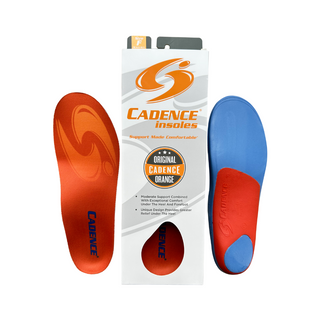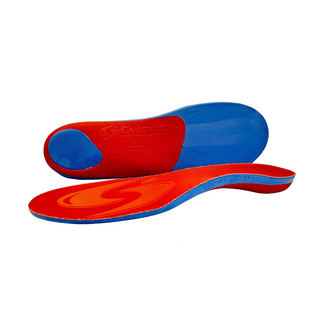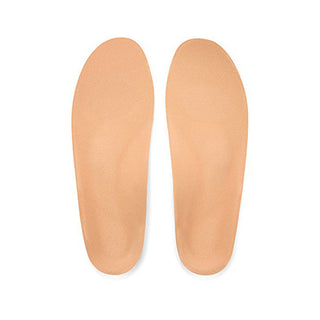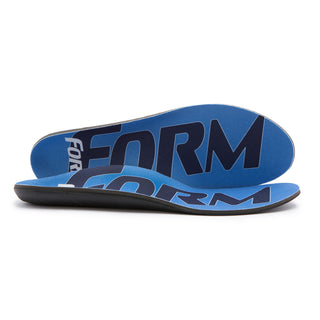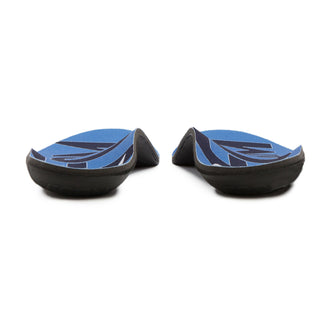Sciatica Symptoms and Relief
Recommended for Sciatica Symptoms and Relief
View allFeeling pain radiating along your lower back down to your hips and legs? How about numbness, weakness, or tingling?
It could be sciatica. Sciatica is a painful condition that impacts the sciatic nerve, it can make simple activities difficult and worsen over time if left untreated.
Read on to learn more about sciatica, its causes, and how to treat it.
What is Sciatica
Sciatica refers to pain that radiates along the path of the sciatic nerve, which branches from your lower back through your hips and buttocks and down each leg. Typically, sciatica affects only one side of your body.
Sciatica most commonly occurs when a herniated disk, bone spur on the spine, or narrowing of the spine (spinal stenosis) compresses part of the nerve. This causes inflammation, pain, and often some numbness in the affected leg.
Symptoms of Sciatica
The pain associated with sciatica can be severe, but most cases resolve with non-operative treatments in a few weeks. People who have severe sciatica that's associated with significant leg weakness or bowel or bladder changes might be candidates for surgery.
- Pain that radiates from your lower (lumbar) spine to your buttock and down the back of your leg is the hallmark of sciatica. You might feel the discomfort almost anywhere along the nerve pathway, but it's especially likely to follow a path from your low back to your buttock and the back of your thigh and calf.
- The pain can vary widely, from a mild ache to a sharp, burning sensation or excruciating pain. Sometimes it can feel like a jolt or electric shock. It can be worse when you cough or sneeze, and prolonged sitting can aggravate symptoms. Usually, only one side of your body is affected.
- Some people also have numbness, tingling, or muscle weakness in the affected leg or foot. You might have pain in one part of your leg and numbness in another part.
What Causes Sciatica
A herniated or slipped disc is one of the most common causes of sciatica.
A herniated disc occurs when the soft, gel-like center of a spinal disc protrudes through a tear in its tough outer layer. This herniation can impinge upon the sciatic nerve causing sciatica. There are other causes worth mentioning though:
- Lumbar Spinal Stenosis: This condition involves a narrowing of the spinal canal in the lower back, which can put pressure on the nerves.
- Age: Age can cause changes in the discs, leading to sciatica.
- Spondylolisthesis: A condition in which one vertebra slips forward over another one, leading to spinal nerve root compression.
- Piriformis Syndrome: The piriformis muscle in the buttocks can irritate or pinch a nearby sciatic nerve.
To properly diagnose sciatica, you should consult with a medical professional.
How to Treat Sciatica
Depending on the severity, sciatica could be treated at home with over-the-counter medication. More serious cases require a medical examination and may require surgery.
Self-care
You can treat mild sciatica at home by avoiding activities that worsen the pain. Make sure you aren’t inactive for too long though as this can worsen symptoms. To manage pain from sciatica at home, try applying heat and ice to reduce inflamation.
Medication
Over-the-counter pain relievers can help reduce pain and inflammation. For more serious cases, muscle relaxants may be needed to calm muscle spasms.
Physical Therapy
A physical therapist can teach you exercises to improve your posture, strengthen the muscles supporting your back, and increase your flexibility. Stretching exercises are particularly important in relieving sciatic pain.
Surgery
Surgery might be an option if conservative treatments don't alleviate symptoms, or if the sciatica is causing significant weakness, loss of bowel or bladder control, or is worsening despite treatment. The most common surgeries are microdiscectomy (removing part of the herniated disc) or lumbar laminectomy (widening the spinal canal).
Do Insoles Help With Sciatica?
Insoles can potentially help with sciatica in some cases, especially if the sciatica is exacerbated by foot problems or poor walking mechanics.
Insoles can help by:
- Improving foot alignment to help correct foot imbalances, such as flat feet or high arches, that might contribute to abnormal walking patterns.
- Reducing impact on the spine by providing better cushioning and shock absorption while walking or running.
- Improving overall posture and alignment, which might help alleviate the stress on the lower back and sciatic nerve.
- Relieving foot conditions such as overpronation or supination which can cause an imbalance while walking and put pressure on the sciatic nerve.
It's important to note that while insoles can be a helpful part of a comprehensive treatment plan for sciatica, they are not a cure-all. Sciatica is a symptom of an underlying issue in the spine or pelvis, and addressing these root causes is crucial for long-term relief.
What to look for in insoles for sciatica
When shopping for insoles to relieve pain from sciatica, here’s what to look for:
- Arch Support: Choose insoles that offer proper arch support tailored to your foot type. For instance, if you have flat feet or high arches, look for insoles designed to accommodate these conditions.
- Cushioning: Good cushioning can help absorb shock and reduce the impact on your spine when you walk or run. This can be particularly beneficial for sciatica relief.
- Heel Support: A deep heel cup in the insole can provide stability and help align the foot, ankle, and leg, reducing stress on the lower back.
- Corrective Features: If you have specific foot issues such as overpronation (inward rolling of the foot) or supination (outward rolling), look for insoles that offer corrective features to address these.
- Activity-Specific Design: Consider what activities you'll be doing. For example, if you're a runner, look for insoles designed for running, which have different features compared to those designed for walking or standing.
Remember, while insoles can help alleviate some symptoms of sciatica, they are not a standalone solution. It's also important to consult with a healthcare professional, such as a podiatrist, physical therapist, or chiropractor, to ensure that the insoles are part of an overall treatment plan for your sciatica.

